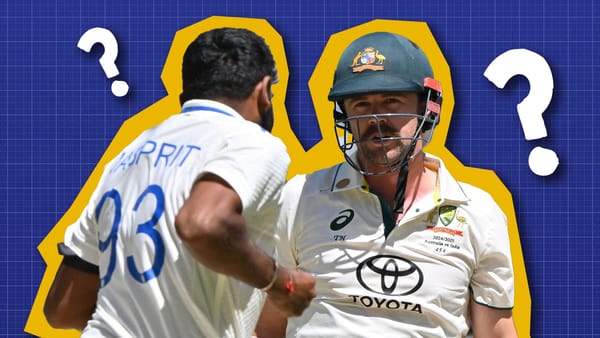Time Machine: Watching an Old T20 match
A look back at what T20 was like 12 years ago
For double century, I researched the game where the Netherlands beat England in the second T20 World Cup.
🎙 New Double Century 🎙
— Jarrod Kimber (@ajarrodkimber) 6:41 AM ∙ Jul 16, 2021
The Day Lord’s Went Orange
An oral history of the Dutch beating England featuring Peter Borren, Pieter Seelaar and Dirk Nannes.
podcasts.apple.com/gb/podcast/dou…
The podcast is up here, and it's one of my favourite episodes I have made. Plenty of great stories from one of cricket's greatest upsets as told by Peter Borren, Dirk Nannes and Pieter Seelaar.
And it's a tough game to research as the World T20 wasn't brilliantly covered back then, and the reports focused more on England losing than the Dutch winning. So I went looking for a video, and I found the entire game on Facebook thanks to the ICC.
But for me, it was more like going into a time machine to see what T20 used to be like.
There wasn't a real strong understanding of T20 at this point, it was still seen as a joke, and few of the commentators had played it. And the players in the middle were still working it out. It meant the whole experience of watching it was so bizarre.
Like, in the last over of England's innings, Dirk Nannes tries to get a run out off his own bowling by wildly turning and throwing without checking who is behind the stumps. You don't see bowlers do that now. They take the one run as a win and try not to give an overthrow.
But other things were ahead of the thinking like England had a floating batting order. Rob Key was playing I suppose what I'd call a backup opener role. The plan was that if they lost an early wicket, he went in, and then when that didn't happen, he didn't appear until all the other batters had gone. He didn't have his pads on for most of the innings.
The commentary told you a lot, like Simon Doull and Harsha Bhogle had done a lot of comms of T20. Doull was talking about power bases, Bhogle was discussing death hitters and flexible lineups. It was very early in T20 to have either of these conversations. And Bhogle also kept saying there was no consolidating in T20, even as England were clearly consolidating repeatedly. Just not in a way that was obvious to someone trained in ODI cricket.
Dirk Nannes' final over that I mentioned before had six straight yorkers. Well seven, he put one down the leg side. But I don't remember him bowling slower balls, trying wide yorkers or even going into his usual back of a length at the body. It was more like the bowling you saw at the death in ODIS.
Ravi Bopara talked about how in his innings, he was waiting for the bad ball. In modern T20, Bopara still plays like this, with maybe slightly more aggression. But unless you have his ability to turn the strike over - which he is near the best in the world at - and some handy bowling skill, it's tough to make a good living this way. It's probably kept Bopara from getting more big T20 deals even as people know he's good.
Jerome Smits saw that Ryan ten Doeschate was swinging the ball in and moved out two players to the leg side boundary in the power play, Bumble suggested this was setting a field for bad bowling. But this was really about making the players hit to the side you want, and it nearly worked as Luke Wright skied close to the cow corner. I don't think now putting two guys on the legside would ever be seen as covering the bad ball, just someone's hitting zone. Smits probably went more conservative than a modern captain would be for Wright. As now we've seen him swing balls to cow a million times, and so you'd just put a fielder right there.
One of the oddest things was young (at the time) left-arm orthodox Pieter Seelaar bowling at the death. He did well, and the reason it happened is that the Dutch team only took five bowlers in the game - their all rounder was injured and replaced by a specialist batter. And when their two medium pacers started doing well in the middle (probably because of the soft ball) that meant the spinner had to be left to the end. But a young spinner, who turns it only one way, just wouldn't bowl at the end unless the ball was ragging now. And it just happened, and to be fair, Seelaar did well.
It's interesting how little talk there is about why England slowed down. Soft ball, lack of hitters, better bowling? It was taken for granted that England slowed down. They scored at nine an over for 11 overs, and 7 an over from then on in with ten wickets in hand. They had a string of guys come in, get set from a few balls, and then get out. But if you look at both innings, it was pretty clear neither team could hit boundaries once the ball got soft. However, neither team was set up with power hitters back then.
Darron Reekers slogs hard from the top; he's a proper powered hitter, who once played first class cricket in New Zealand. The interesting thing is, as he's taken a big bite out of England's mid-size total, Doull is suggesting he should be an anchor. Couldn't see a player like Reeker being treated that way today.
But there was one incredible moment of commentary. Adil Rashid comes on and Nasser Hussain says, "David Lloyd gets his wish. He reckons every T20 side should have a leg spinner, doesn't matter how good they are. Get a leg spinner in. No idea why he's got that theory, he just believes that leg spin does the damage". I remember Bumble saying this a lot, and while he wasn't the first, he certainly committed to it. And it turns out he was probably even more right than he thought.
The England comms obsessed with the keeper up at the stumps. It's why James Foster was picked "you need a specialist wicket-keeper and that's what this guy is" says Bumble. Of course his lack of batting was part of the reason they were ten short. The argument over whether you get your best keeper or best batter seems to have been ended for now. But back then, this was a pretty big issue. But Foster let a bye through he should have stopped and dropped Borren because he was up at the stumps (it would have been a simple chance if he was back). There are benefits to having the keeper up at the stumps, but there are also drawbacks.
For the last ball of the match, England actually considered Foster keeping up to the stumps to stop the Dutch taking one for the bye. But with Broad bowling, probably thought the risk was too high. You can't even have that conversation without someone like Foster. And that's why we don't see it often now. As we've bred that kind of keeper out of the game.
The commentators were also obsessed with dot balls and singles. Even now, this is still a part of T20 coverage. But nothing like this game. England didn't hit a six in their innings, and that received far less talk than the dot balls both teams faced.
England had - according to my notes - nine or ten run out chances. And they didn't get a run out. And some of these were really easy, others more 50/50. But the odds of not getting a single run out from all these opportunities has got to be high. But they did not mention that much at all. Today I think they would feature it more, but commentators are still hesitant to talk about luck. Despite the fact it plays a huge factor in T20 matches.
And to end the game you had Stuart Broad's around the wicket tactic to right-handers. It's not why that over is famous. But I remembered it not just for England losing in some hilarious scenes, but the first time I really saw a bizarre T20 strategy at the international level. And the weird thing is these wide around the wicket Yorkers actually worked, it's just that the Netherlands won anyway.
It's not that most of these were mistakes or bad comments. We knew little about the game then, and it's incredible to think how much it has already changed.
In 2009 teams scored at 7.57 runs per over in T20. This year it was 8.10. It's only just over 10 runs a match, but T20 is a different sport than it was in 2009.
This is the chart, that prompted a blog post, that prompted a podcast episode.
— InsightLane (@insightlane) 12:45 AM ∙ Jul 15, 2021
@ajarrodkimber invited me onto his podcast to tease out how and why ODI cricket is able to have its cake and eat it too.
anchor.fm/redinker/episo…




